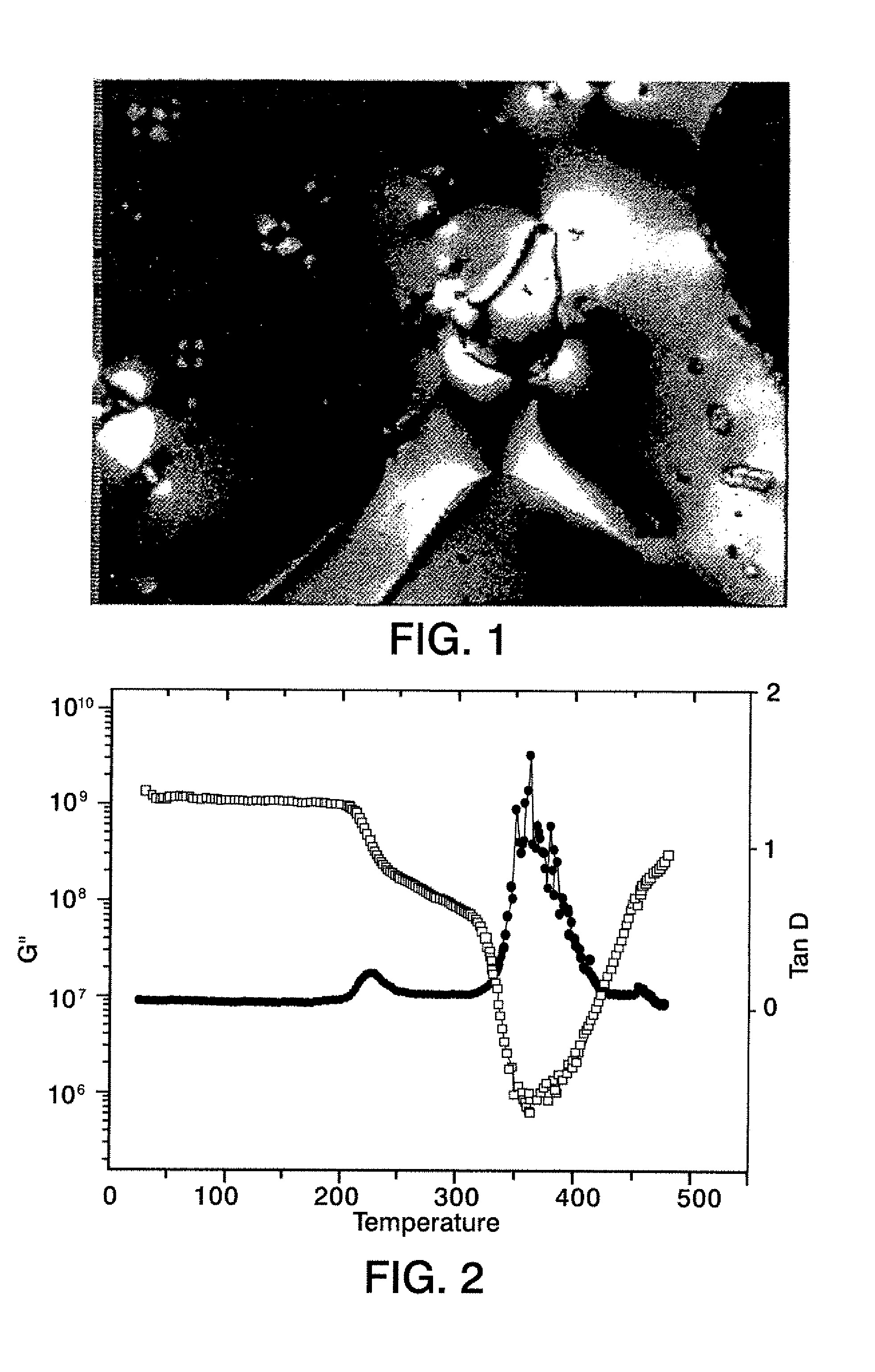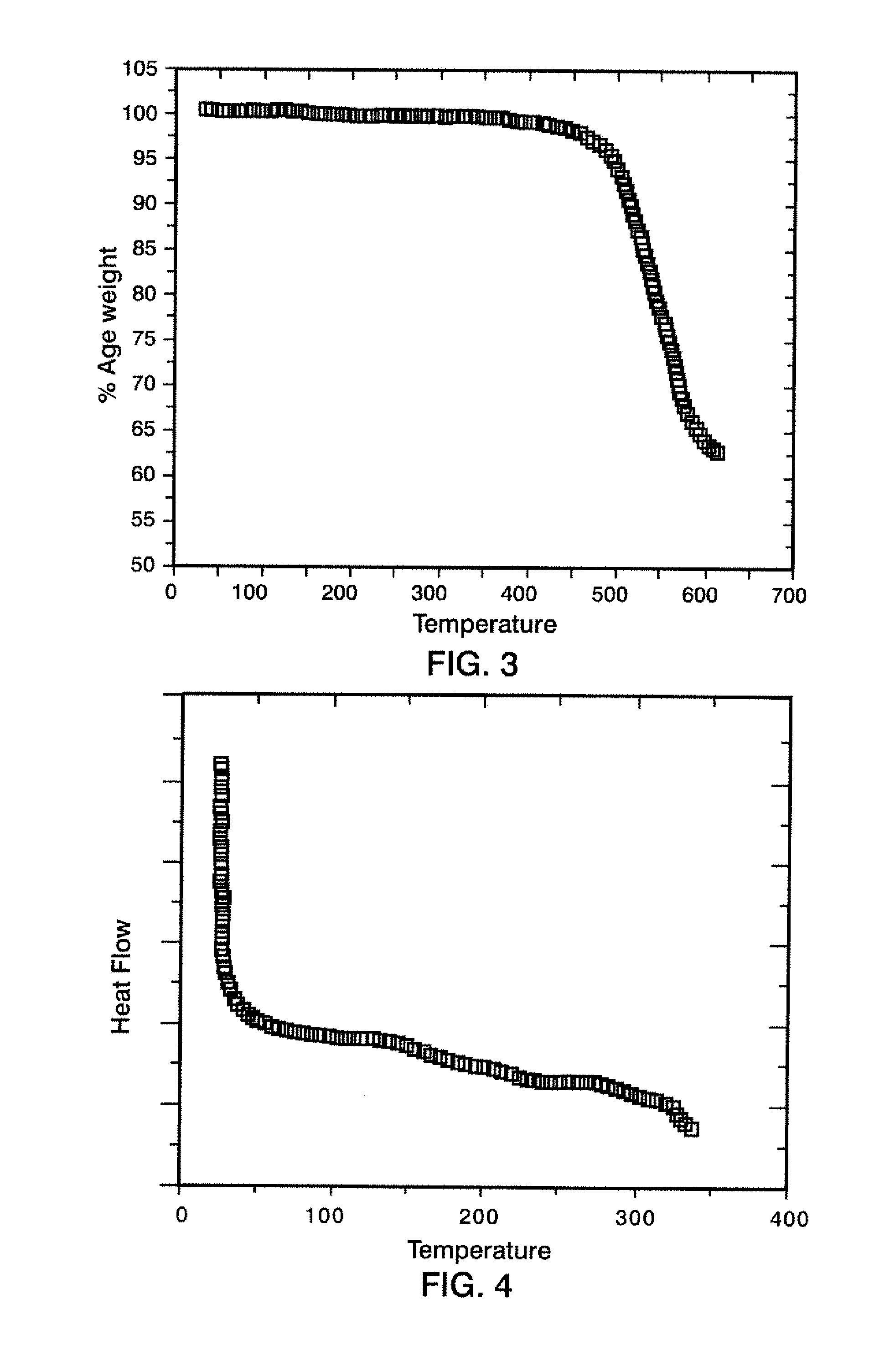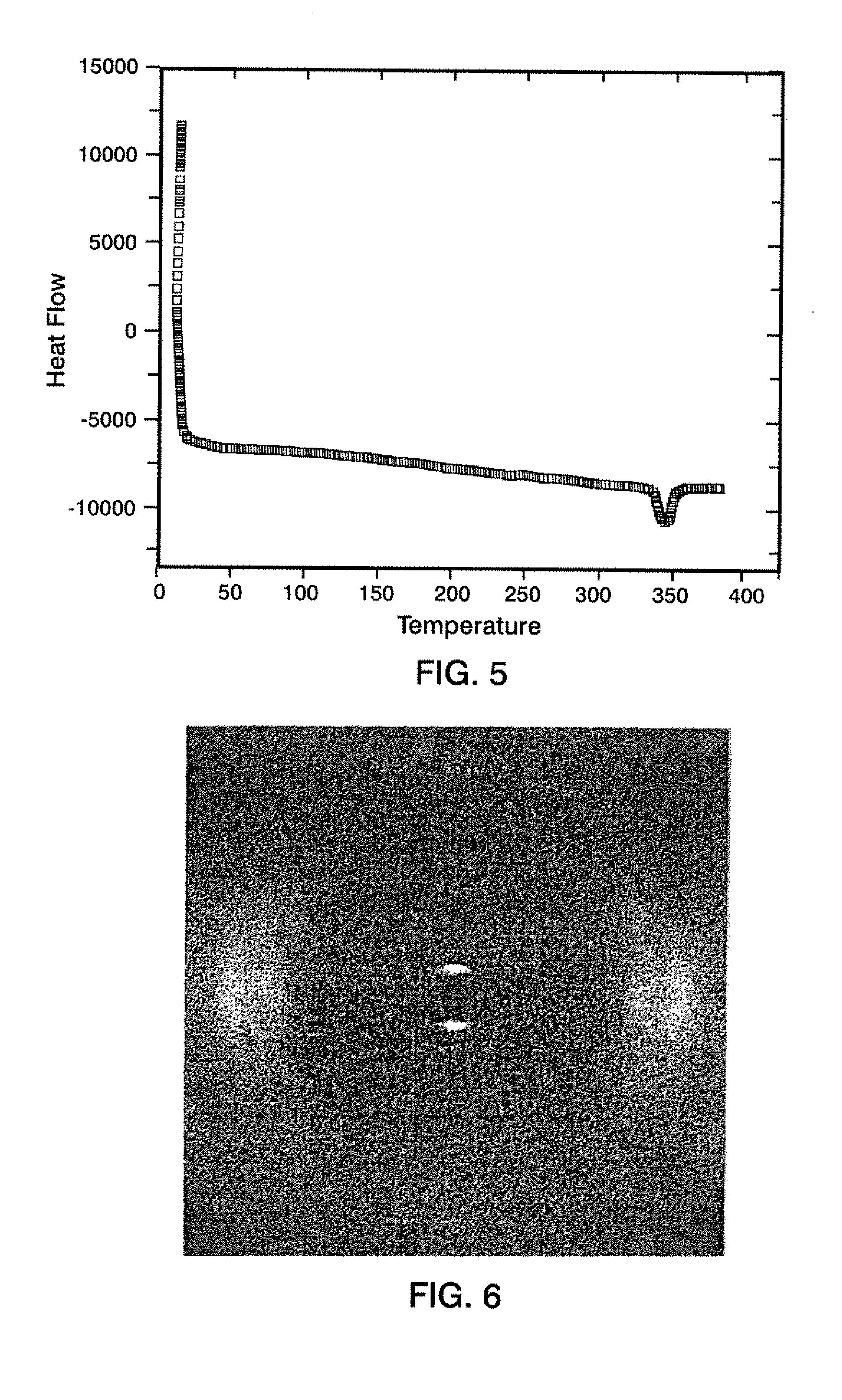Wholly Aromatic Liquid Crystalline Polyetherimide (LC-PEI) Resins
a technology of liquid crystalline polyetherimide and resin, which is applied in the field of thermoplastic liquid crystalline polyetherimide, can solve the problems of high intractable polymer that never reaches the surface, is difficult to process, and is known to be extremely difficult to process
- Summary
- Abstract
- Description
- Claims
- Application Information
AI Technical Summary
Benefits of technology
Problems solved by technology
Method used
Image
Examples
example 2
Synthesis of high-molecular weight BPDA-P3 Liquid Crystal PEI (film, thermally imidized) (inherent viscosity of the poly(amic-acid) precursor equals 0.8 dL / g)
[0033]A 100 ml 2-neck flask equipped with overhead stirrer and nitrogen inlet was charged with 2.856 g (0.006 mol) (P3) and 10 g dry N-methyl pyrrolidinone (NMP). This suspension was stirred for 20 min. at room temperature to allow the diamine monomer to dissolve. 3,3′,4,4′-biphenyltetracarboxylic dianhydride (BPDA), 1.765 g (0.006 mol) was dissolved in 16 g dry NMP and added to the diamine solution under a stream of dry nitrogen. Polymerization (about 15% solids) was allowed to proceed for 24 h. under a nitrogen atmosphere at room temperature. The obtained poly(amic-acid) had a inherent viscosity of 0.8 dL / g. The amic-acid was spread into a film, dried and thermally imidized using a hot air convection oven (1 h. at 100° C., 1 h. at 200° C. and 1 h. at 300° C.). A tough, flexible film was obtained with a Tg of 230° C. and the l...
example 3
Synthesis of low-molecular weight (5,000 g / mol) BPDA-P3 Liquid Crystal PEI end-capped with phthalic anhydride (powder, chemically imidized)
[0035]A 100 ml 2-neck flask equipped with overhead stirrer and nitrogen inlet was charged with 0.952 g (2 mmol) (P3) and 3 g dry dimethylacetamide (DMAc). This suspension was stirred for 20 min, at room temperature to allow the diamine monomer to dissolve. 3,3′,4,4′-biphenyltetracarboxylic dianhydride (BPDA), 0.51 g (1.7 mmol), and 0.08 g (0.53 mmol) phthalic anhydride were dissolved in 3.2 g dry DMAc and added to the diamine solution under a stream of dry nitrogen. Polymerization (20% solids) was allowed to proceed for 24 h. under a nitrogen atmosphere at room temperature. The poly(amic-acid) was treated with 0.27 g pyridine and 0.34 g acetic anhydride for 4 h. The obtained polymer solution was slowly added to boiling toluene and the final imidized LC PEI was obtained as a bright yellow powder after filtration. This polymer has a Tg of 220° C. a...
example 4
Synthesis of high-molecular weight BPDA-P3 / P1 Liquid Crystal co-polymer PEI (film, thermally imidized)
[0036]A 100 ml 2-neck flask equipped with overhead stirrer and nitrogen inlet was charged with 1.428 g (0.003 mol) (P3), 0.292 g (0.001 mol) 1,4-bis(4-aminophenoxy)benzene (P1) and 8 g dry NMP. This suspension was stirred for 20 min. at room temperature to allow the diamine monomers to dissolve. 3,3′,4,4′-Biphenyltetracarboxylic dianhydride (BPDA), 1.177 g (0.004 mol) was dissolved in 8.4 g dry NMP and added to the diamine solution under a stream of dry nitrogen. Polymerization (15% solids) was allowed to proceed for 24 h. under a nitrogen atmosphere at room temperature. The obtained poly(amic-acid) had a inherent viscosity of 1.1 dL / g. The amic-acid was spread, then dried and thermally imidized using a hot air convection oven (1 h. at 100° C., 1 h. at 200° C. and 1 h. at 300° C.). A tough, flexible film was obtained with a Tg of 240° C. and the liquid crystal melt forms at approxim...
PUM
| Property | Measurement | Unit |
|---|---|---|
| temperature | aaaaa | aaaaa |
| temperature | aaaaa | aaaaa |
| temperature | aaaaa | aaaaa |
Abstract
Description
Claims
Application Information
 Login to View More
Login to View More - R&D
- Intellectual Property
- Life Sciences
- Materials
- Tech Scout
- Unparalleled Data Quality
- Higher Quality Content
- 60% Fewer Hallucinations
Browse by: Latest US Patents, China's latest patents, Technical Efficacy Thesaurus, Application Domain, Technology Topic, Popular Technical Reports.
© 2025 PatSnap. All rights reserved.Legal|Privacy policy|Modern Slavery Act Transparency Statement|Sitemap|About US| Contact US: help@patsnap.com



